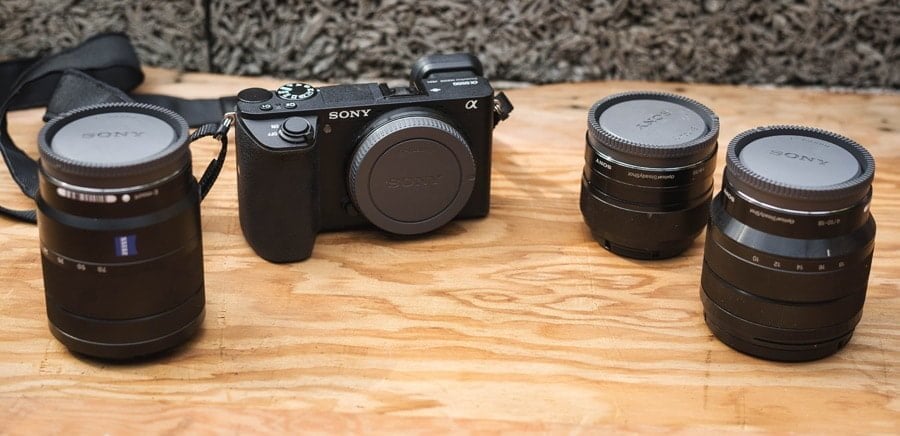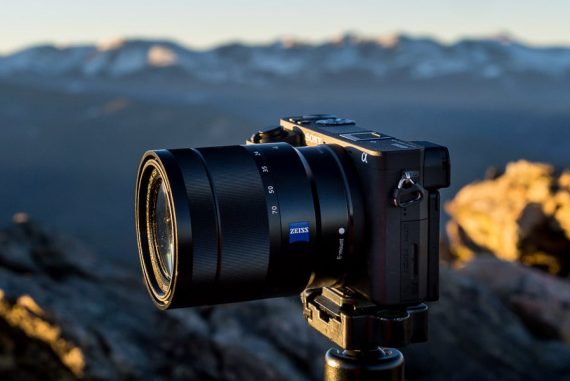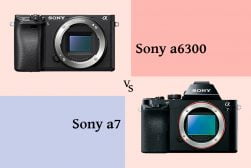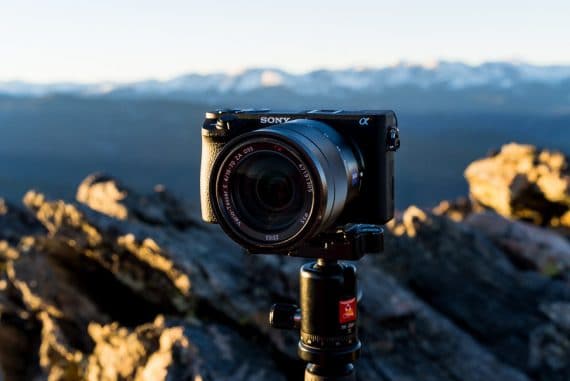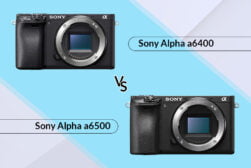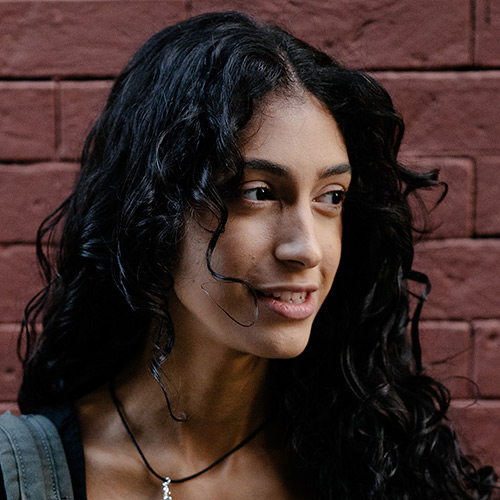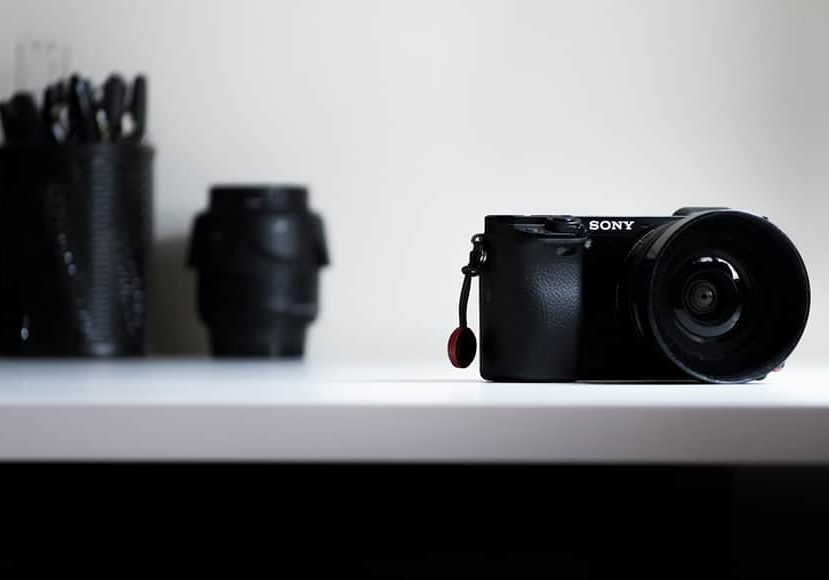
Sony Alpha a6300 Camera Review
Check out this in depth review of the Sony Alpha a6300 mirrorless camera. See comparisons with the a6500 and even the a7iii. Is this the compact for you?
When I first received the Sony a6300 to review, I didn’t yet know I was looking for a smaller, lighter camera. I’d already downsized from a Nikon DSLR to a Sony a7III and was completely happy with it…
I’m also not much of a gearaholic. How many different cameras does a wilderness and travel photographer need to take with them, after all?!
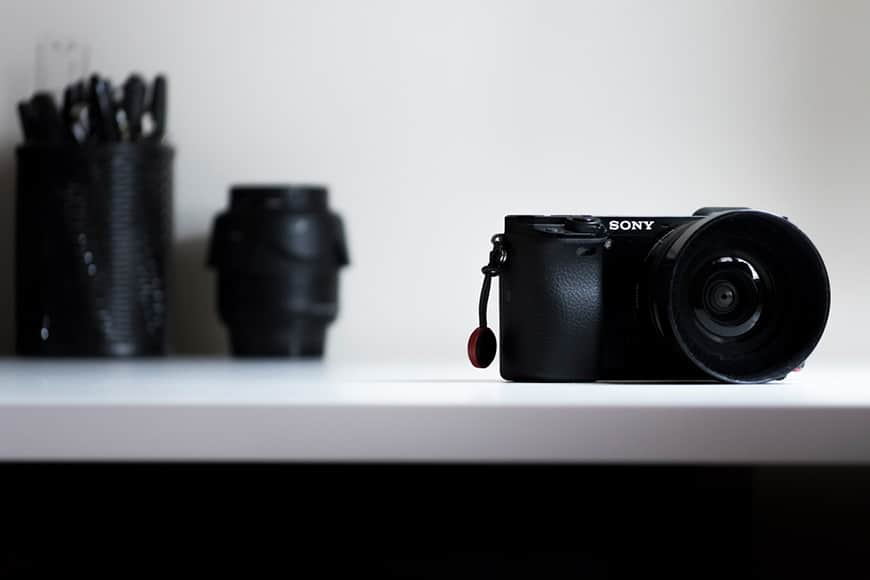
Excellent autofocus performance, great image quality, and plenty of useful features, all wrapped up in a compact body.
After playing around with the a6300 for a few days however, the advantages of having a smaller, lighter, and much less expensive Sony mirrorless camera really started to grow on me.
Not only is the size and weight a huge bonus, but the Sony FE lenses I need for my a7III definitely aren’t cheap. When I travel with all three of them (all I can afford at the moment), my kit’s worth well over $5,000. That’s a bit much to be carrying on me for some of the places I go…
(See these guides for more comparisons: Sony a7 vs a6300 | Sony a6300 vs a6500.)
So now I’m quite set on the idea of a secondary travel camera that can take advantage of cheaper lenses designed for the APS-C sensor.
The question is – is the Sony a6300 the one? Read on to find out…
Sony a6300 Review | Specs
- Dimensions: 2.63 x 4.72 x 1.92 in (WxHxD)
- Fast autofocus with 425 phase-detection AF points/169-point auto contrast
- High-Speed live-view continuous shooting
- Anti-dust system: Charge protection coating on Optical Filter and ultrasonic vibration mechanism
- 24.2-megapixel Exmor® CMOS sensor
- FPS: 11.1 with continuous autofocus and exposure tracking.
- 4K movie recording with full pixel readout/no pixel binning
- Movie recording format: XAVC S/AVCHD format Ver. 2.0 compliant/MP4
- ISO for still images: 100-25600 (up to ISO 51200 in expanded ISO range.)
- ISO for movies: ISO 100-25600
- Battery Life: Approx. 310 shots (Viewfinder); 350 (LCD monitor)
- Buffer: up to 307 images (around 36 seconds) of high speed continuous shooting
- Eye AF available with AF-C
- Multi-slot reader for Memory Stick Duo™/SD memory card
- Max resolution 6000 x 4000
- Lens Mount: Sony E
- Viewfinder: Electronic XGA OLED, 1.0 cm (0.39 type)
- Face Detection
- GPS: None
- Format: MPEG-4, AVCHD, XAVC S
- Articulated LCD: Tilting
- Max Shutter Speed: 1/4000 sec
- Bracketing: 3 frames, H/L selectable
- Flash Sync Speed: 1/160 sec
- Capable of silent shooting
The Sony a6300 is a small, compact mirrorless camera that came out in March 2016. It’s not the most current in the a6000 line, with the a6500 coming out just seven months later.
There was a lot of hubbub around the a6500 getting released less than a year after the a6300, as many folks had upgraded to the a6300 and were hoping to stick with it a while. The a6500 does add a number of features, but the price point is low enough that it’s still worth considering.
Let’s get into the nitty gritty.
Build & Handling
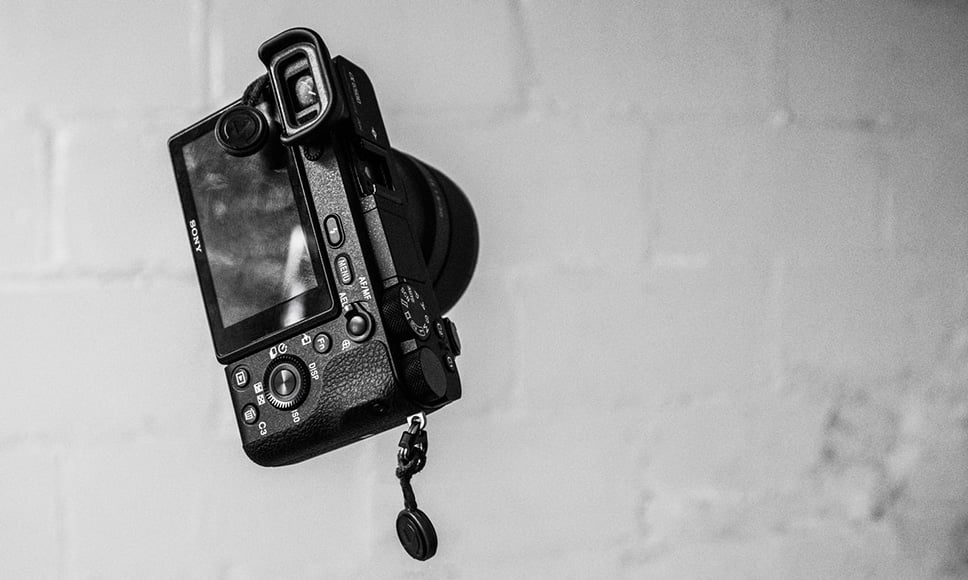
Outwardly, the Sony a6300 is largely identical to its successor, the Sony a6500. It’s half-metal, half-plastic, built around a magnesium frame. The components (i.e. the power switch, controls, battery hatch, etc.) are plastic, which is not surprising at its price point.
Still, it feels sturdy enough and good in the hand. All of the buttons and dials work well and feel solid. Everything pretty much worked as expected.
I haven’t yet learned to be rough with expensive cameras, so I can’t speak to dropping them or simply “tossing” them into my pack like so many reviewers do, so I can’t speak to that part of things.
Also, the camera I was trying out for a month clearly had seen some use (as you can see in the photos). It still performed perfectly. Not a hitch. So while I haven’t dropped the camera or thrown it around to test its build quality, it’s clear that the a6300 I was using has been around and still made it through just fine.
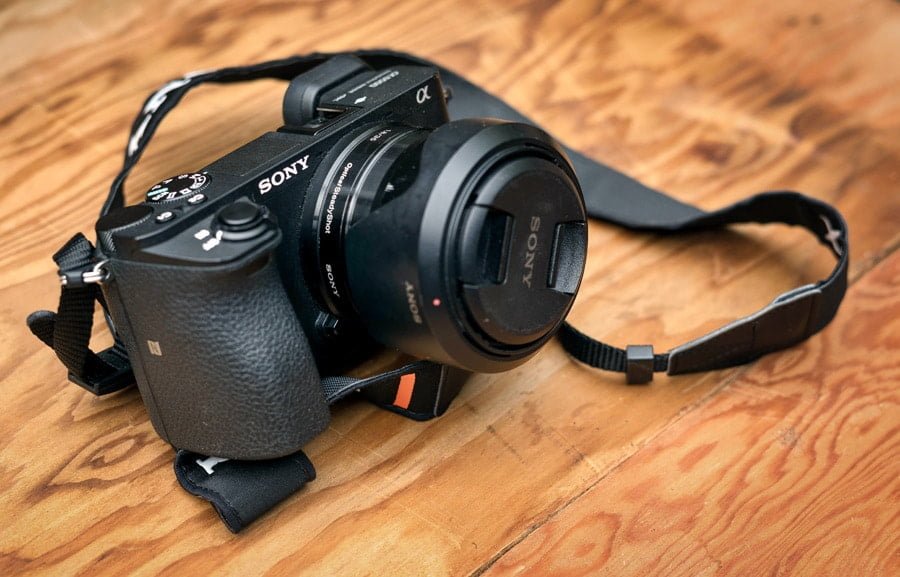
As far as handling is concerned, it took a little getting used to for me. At this point I’m pretty accustomed to my a7III and it took a while to get used to the arrangement of the control dials. You have to reposition your hand when going from one dial to the other. Since I shoot in manual, that means I’m losing my composition each time I have to switch between the dials (unless I’m shooting on a tripod). Not quite fun.
The other thing that bothered me was that it was easy to miss the control I was going for and end up on a another one. For example, I would hit the display rather than the drive mode or the ISO when moving quickly. I imagine that’s simply because I’m used to a larger camera and control wheel and that I’d get used to it over time.
Otherwise, I really liked how the a6300 handled. It felt good in the hand and the controls all worked as expected. In fact, I was pleasantly surprised. It was much easier to work with than other smallish cameras I’ve shot with (point-and-shoots as well as mirrorless).
One thing some folks won’t like is that the a6300 doesn’t have a touch screen. While that will be a deal breaker for many, I don’t tend to use a touchscreen all that much so I don’t really miss it. (I’ve only recently started using it on my a7III.)
That being said, the viewfinders on smaller cameras can be a bit awkward to use, and the Sony a6300 is no exception. If it’s too annoying, the a6500 might be the better option.
Something I didn’t like about the screen on both the a6300 and the a6500 is that it wasn’t easy to see in bright sunlight. Obviously bright sunlight isn’t the light I prefer, but sometimes it can’t be avoided. In fact, there were times that even late in the evening I’d have a hard time seeing the screen if the sun was somehow shining on it. It also looks pretty washed out due to low contrast.
Also, the grip on the a6300 is a bit shallow. It takes a bit of getting used to if you’re stepping down from a larger camera. If you’re stepping up however, it’s still light years better than a point-and-shoot or phone camera.
Over all, a neat, clean design that works surprisingly well for its small size.
Autofocus
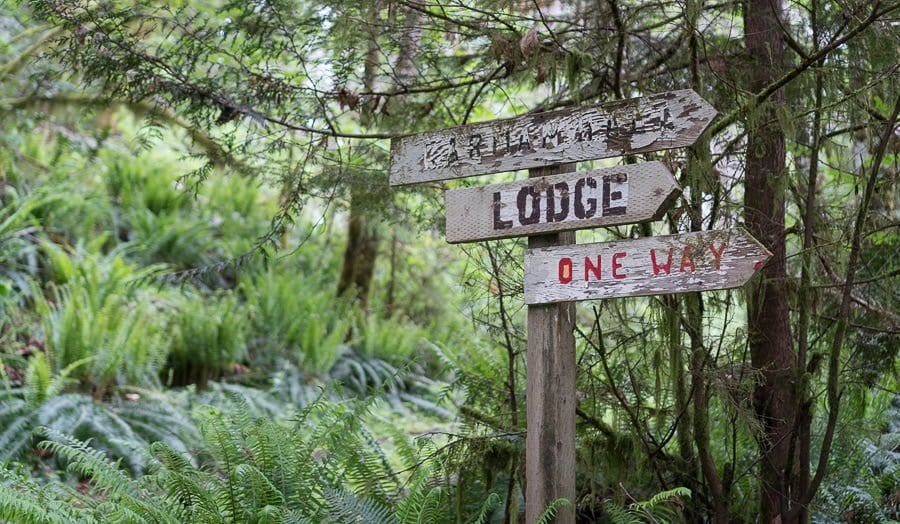
The Sony a6300 has excellent autofocus in just about every situation. It works particularly well with prime lenses. | Sony a6300 + Sony 35mm f/1.8 | 1/20 at f/2.2 | ISO 100
The a6300’s autofocus has 425 phase-detection points as well as 169 contrast-detect points. This isn’t any different than the newer a6500, and it’s quite impressive.
With all of these points, AF times can be as short as 0.05 seconds. Translated to day-to-day use, it certainly feels lightening fast – especially when using prime lenses.
Practically speaking, I couldn’t really tell much difference between it and the a7III, except in low light situations or other challenging focus situations.
The main autofocus issues I had with the a6300 were when I was trying to get it to focus on smaller things like plant fronds or tree branches. Still, it immensely outperformed my old Nikon DSLR when photographing plant starts:

Surprisingly, I didn’t have any trouble getting the a6300 to focus immediately on these bok choy seedlings. | Sony a6300 + Sony 35mm f/1.8 | 1/125 | f/1.8 | ISO 400
Another plus with the a6300‘s autofocus is that its face recognition really works. It’s fast and accurate, video or still. It also works well in low light situations and doesn’t need its AF illuminator. (Really, that matters. The AF illuminator drives me nuts when I’m trying to be low profile.)
Video autofocus is also stellar. To see it in action, check out these videos from AOJOPhotography and Max Yuryev:
The verdict? I rarely had to think twice when using autofocus on clear subjects. It simply worked, regardless of the light level.
The only times it missed were in situations that every camera I’ve ever had struggled. Small subjects with larger, clearer subjects in the same frame (i.e. tree branches with a building in the background).
Sony a6300 Image Quality

Most of the the Jpegs I took came out just lovely. | Sony a6300 + Sony 35mm f/1.8 | 1/20 | f/1.8 | ISO 100
The Sony a6300 comes with a 24.2-megapixel Exmor sensor, just one step down from a full-frame sensor. It’s the same well-tested sensor that’s in the a6500 and it really doesn’t disappoint.
Coupled with Sony’s new processing algorithms, the results are exceptional image sharpness, amount of fine details, and noise-handling.
In fact, I was particularly surprised at the image quality. I wasn’t expecting much – I’m more accustomed to the quality of a full frame sensor. Still, whether I was shooting in Jpeg or Raw, the images were close to what I’d come to expect from my Sony a7III.
Even in low light the details are sharp and crisp, with few visible sharpening artifacts. The contrast is nice too. To round it out, the dynamic range is fantastic – a whopping 13.7 stops!
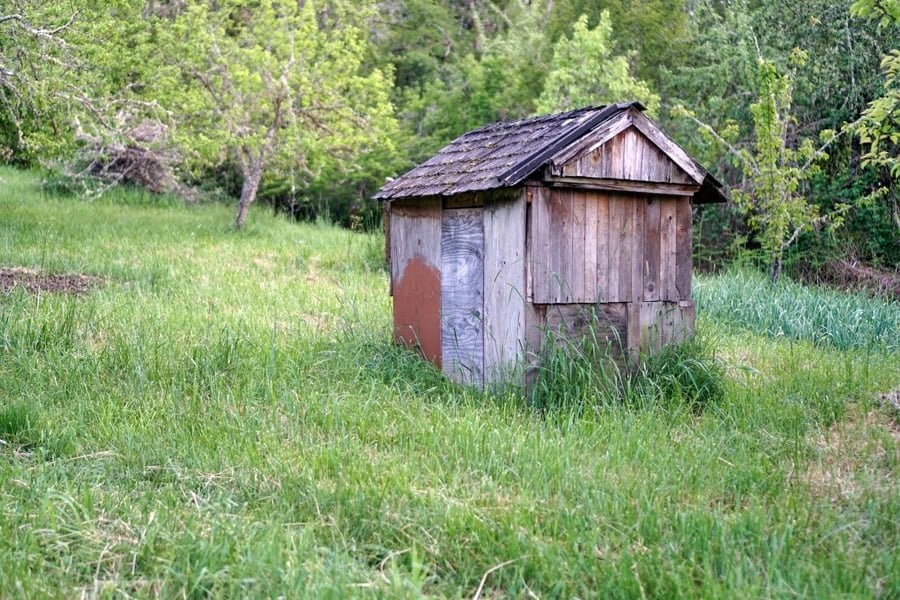
Shot as a Jpeg. | Sony a6300 + Sony 35mm f/1.8 | 1/250 | f/1.8 | ISO 100
As someone who shoots almost exclusively in Raw, I was pleased to find the Jpegs quite easy to work with. In fact, just about all of them were pretty nice straight out of the camera.
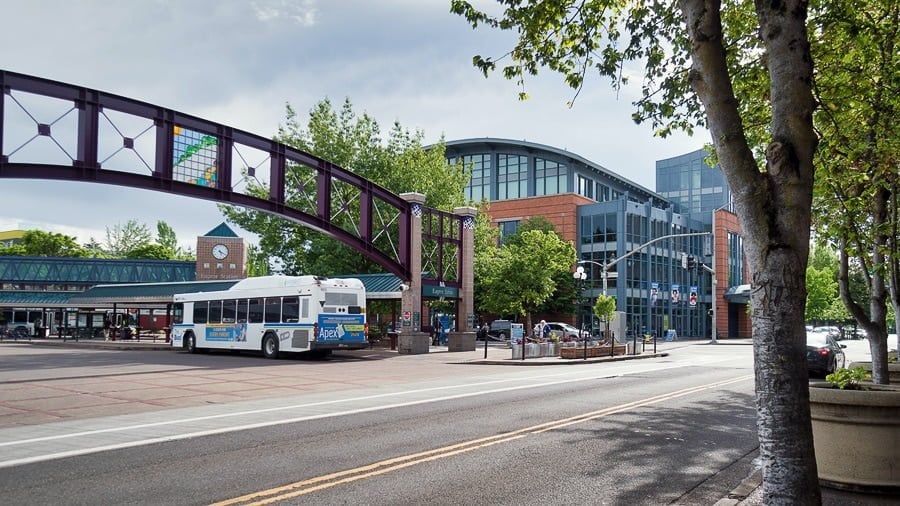
I added a slight touch of Luminar’s Accent AI filter to this one. | Sony a6300 + Sony 10-18mm f/4 | 1/1000 | f/4 | ISO 200 | 18mm
I was thrilled to get such high quality images out of a camera that fit in one hand. It definitely made me think twice about wanting a smaller travel camera as an everyday backup.
This little guy takes up next to no space in the bag, especially when paired with a prime lens.

Sony a6300 + Sony 10-18mm f/4 | 1/3 | f/6.3 | ISO 400 | 10mm
In the photo above, I was trying to see just how far I could push without IS. At 1/3 of a second, it’s no surprise that the shot came out slightly soft.
Still, the the level of sharpness is surprisingly high for a handheld at that speed (especially with the Sony 10-18mm wide open at 10mm).
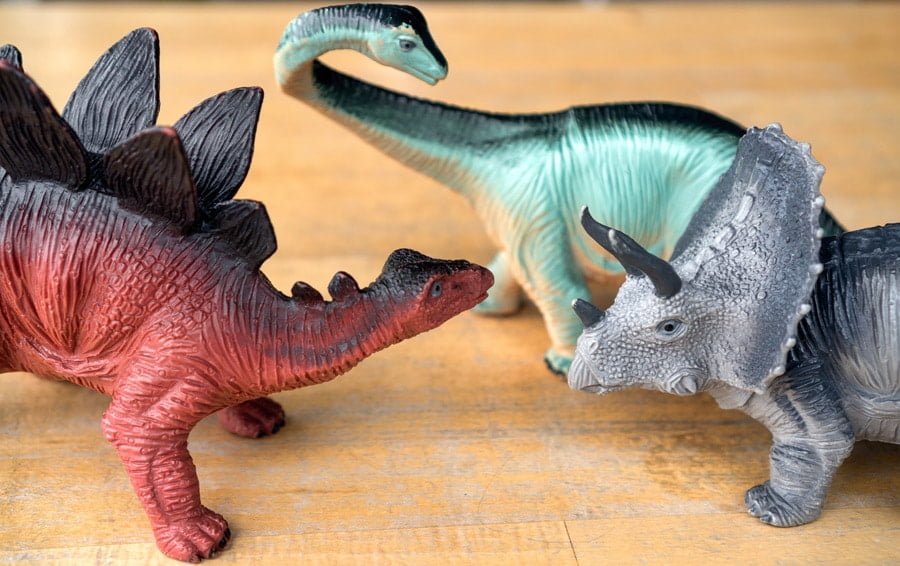
Sony a6300 + Sony 35mm f/1.8 | 1/100 | f/2.8 | ISO 100
The photo above was just taken in play, but you can see there’s lots of crisp detail.
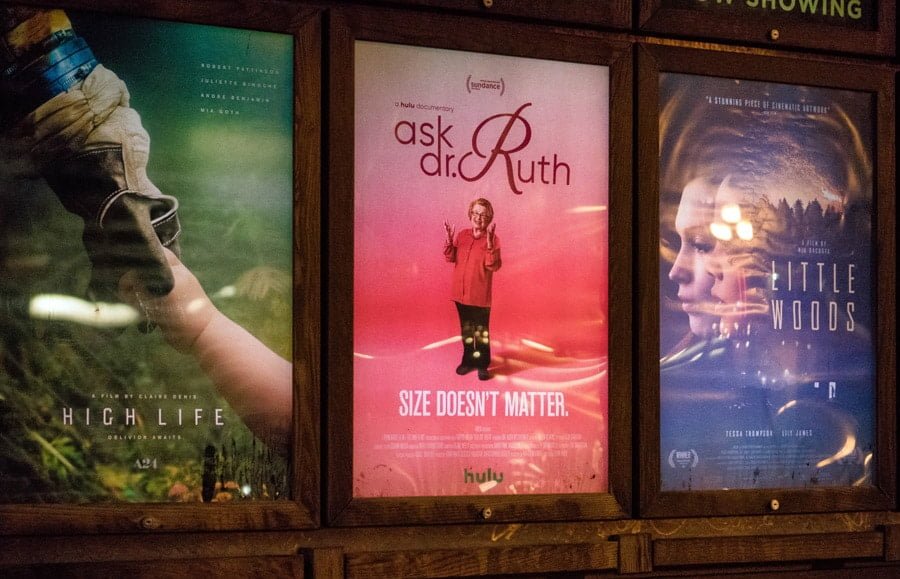
Pumping up the ISO a little didn’t hurt one bit. | Sony a6300 + Sony 35mm f/1.8 | 1/1250 | f/2 | ISO 8000
As mentioned before, the dynamic range of the Sony a6300 is delightfully broad. It was a joy to use both indoors and outside on the streets at night. Sure, most modern cameras these days can handle incredibly high ISOs, but that doesn’t mean I don’t expect at least a little noise.
Though you can’t see it at this size, the Jpeg above came out quite clean. Apparently this is due in part to Sony’s new image processing algorithms which apply aggressive noise reduction while retaining image details. (You can get these in the firmware update, I think). Either way, I didn’t notice noise in any of the high ISO/low light images I took.
One thing I did notice, however, is that no matter how perfectly I set my exposure settings (based on the histogram, internal camera meter, etc.), I almost always came out with some blown-out highlights. I’m not sure what that’s about.
Still, all things considered I was quite pleased with the image quality. Together with the super fast autofocus, compact size and the great feel in the hand, the Sony a6300 was a joy to shoot with.
Video
The Sony a6300 has the same video capabilities as its successor, the a6500. Both cameras shoot amazing video. The only difference is that the a6500 comes with 5-stop IS. Obviously if you tend shoot on a tripod, the lack of IS won’t be a deal breaker.
Here are the stats:
- 4K (3840 x 2160) at 25p
- 30p recording in a Super 35mm format
- Full HD recording (if you need smaller files)
- the option to go up to 120p (allows you to capture slow motion video)
- sampling of 4K footage at 4.2.0 internally and 4.2.2 externally over HDMI.
- all the flat picture profiles you would want for grading footage later
I’m not much of a video shooter, so if you’re really looking into the a6300 for its video capabilities, check out this well-regarded review by Caleb Pike:
Sony a6300 Price
When it was first released, the Sony a6300 went for around $1500 – see latest price here. With the advent of the a6500 and a6600, the Sony a6300 is now a steal. Sure, the newer models have more bells and whistles, but the Sony a6300 is still a a decent camera.
If you’re looking for a backup camera – maybe something lighter or less expensive – the Sony a6300 fits the bill nicely. It’s inexpensive, performs well, and fits in the hand.
It’s an especially good choice if you already use a full-frame Sony as your primary camera, as you’ll already have lenses that work with the Sony a6300.
While a somewhat heavier, FE lenses work just fine on the Sony E-mount crop sensor camera bodies. Primes work especially well. Either way, using lenses you already have will save you from having to buy new ones.
That being said, it’s also nice to take full advantage of the Sony a6300’s tiny size and slap on one of the smaller-yet-excellent E-mount primes onto it.
Sony a6300 Bundle
If this is your first foray into the world of interchangeable lenses and you’re starting from nothing, bundle can be a great way to get on your feet and save a little money while you’re at it.
The best one I’ve found is this one (the description may have changed since I wrote this review, but this is the kind of thing you can expect to be included in a Sony a6300 bundle):
- a camera bag
- 2 batteries
- 64GB Extreme SD Memory UHS-I Card
- slave flash
- remote
- 12-inch Spider Tripod
- microfiber cloth
- and a lens cleaning pen
- memory card wallet
And other things.
Sony a6500 vs the a6300
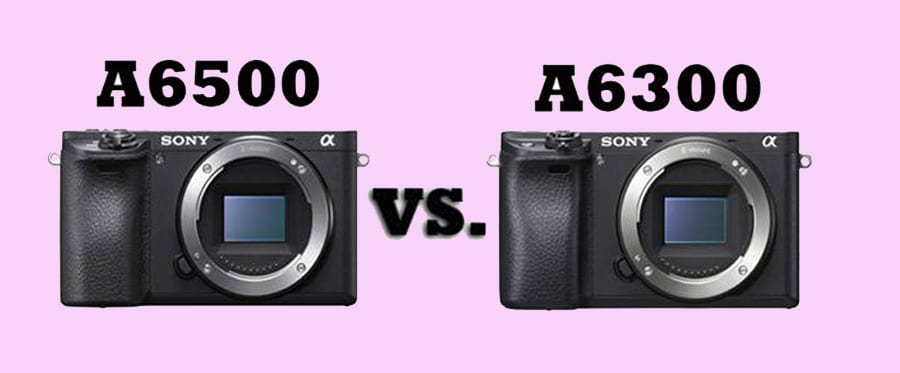
With the advent of the the Sony a6500, it begs the question: which one should you buy?
On the surface the a6300 has a lot of the same features as the a6500. They both have a 24.2MP APS-C sensor, a 4D focus system, and viewfinder. They both shoot at a maximum 11FPS and share the same video capabilities. The dial arrangement and form factor are also the same.
Still, the a6500 has a a few serious improvements worth taking a look at.
The most obvious is the 5-axis in-body stabilization. That’s huge, especially for compact cameras of this size. They’re hard to hold steady under the best of circumstances. Add in image stabilization and it’s a game changer.
The addition of a touchscreen to the a6500 is also significant. The touch screen itself is quite basic, but considering the a6300 doesn’t have a joystick either, the touchscreen makes a world of difference – especially for choosing the focus point.
The a6500 also has a much more generous buffer. At its fastest (11 fps), it can capture up to 107 Raw files or 307 full-size Jpeg files. The a6300 doesn’t come anywhere close. At 11fps it can only do 22 Raw images or 44 Jpegs.
Another key difference is the fact that the the a6500 has a newer, faster LSI chip. It also has a faster image processing algorithm. This makes a huge difference when dealing with high-noise situations. The additional processing power helps to effectively preserve detail while reducing noise when working in the mid to high ISO range. Still, as I said before, I didn’t really have a lot of noise issues with the a6300.
Why go with the a6300 instead of the a6500? Price. You’ll generally save between $200-$300 going with a Sony a6300 (with kit lens) over a Sony a6500 (body only). For many, that’s quite a difference.
As a secondary camera, that works for me. If I need phenomenal low-light performance or IS, I can always default back to my a7III. If you’re looking for a primary camera, however, I’d probably go with the a6500. The IS and the improved LSI chip are more than worth the extra $300.
Sony a6300 vs the a7III
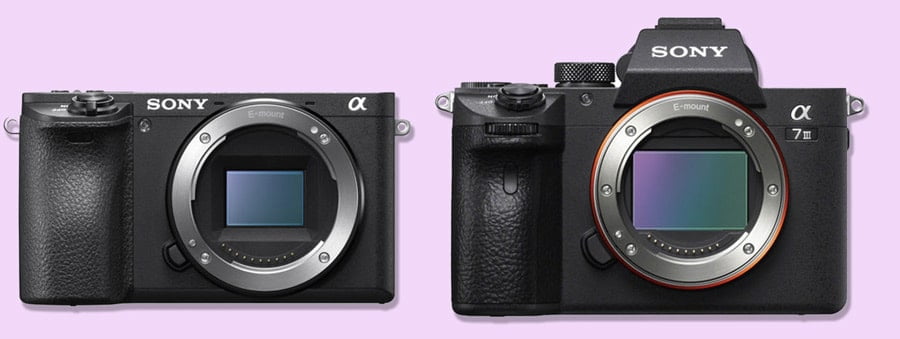
If you’re having a hard time deciding between the full-frame Sony a7III or the crop sensor APS-C a6300, this guide might help.
The two cameras have a few things in common: they both have fast burst speeds (11fps for the a6300 and 10fps for the a7III), live view with blackouts up to 8fps, and WiFi, NFC, and Bluetooth connectivity.
But that’s pretty much it for similarities.
Next to the obvious difference of the sensor size, the design and ergonomics are quite different.
The Sony a6300 has the flat-topped design shared by all the a6000 APS-C models. The viewfinder is located to one side (the top left) and the grip is quite small.
Conversely, the Sony a7III features a considerably bigger build. The larger size makes for much better ergonomics and handling. It also affords more room for dials and buttons, including an AF joystick and an AF-ON button. (The joystick is especially helpful if you’re using the viewfinder.) There’s also a headphone jack.
The increased size of the Sony a7III also makes room for a dual SD card slot – one which is UHS-I, the other UHS-II. The Sony a6300 only has a single UHS-I slot.

Both the Sony a6300 and the Sony a7III have an OLED electronic viewfinder. The resolution is the same too, at 2359k dots. Still the a7III’s viewfinder is considerably larger and has a higher magnification (0.78x vs. 0.70x).
The LCD screen is pretty much the same on both models, with a 921k-dot resolution. There’s a minor difference in that the a7III’s screen articulates a bit more, but the difference is fairly insignificant.
When it comes down to it, though, it’s the sensor and processor that separates these two cameras most.

While the Sony a6300 is an impressive and affordable mirrorless APS-C camera, the Sony a7III is simply fantastic if you’re looking to go full-frame.
Its BSI CMOS sensor is downright impressive in how it gathers light. Add in its BIONZ X image processor and you’ll find that the a7III is simply amazing in low light situations. Unsurprisingly, its sensor sensitivity is fine as well, with a base range ISO of 100 to 51200 and an expanded range of 50 to 204800 (102400 for video).
The Sony a6300 is understandably quite different. Its APS-C sensor has 25600 at the top of its base range (51200 when extended). That’s a considerable difference, though not surprising given the difference in sensor size.
Another thing to keep in mind is that while both cameras offer 14-bit compressed Raw, only the Sony a7III comes with an uncompressed Raw option. The Sony a7iii also contains a new, front-end LSI chip that substantially reduces noise and improves the processing speed.
The autofocus on both cameras is impressive, but the a7III is a stronger performer there as well. Based on the A9, the Sony a7III’s 693 phase detection and 425 contrast detection points across 93% of the frame have won it a lot of admirers, with many claiming its the best autofocus system on the mirrorless market.
Still, the Sony a6300 is no slouch. It has fewer points (425 phase detection and 169 contrast detection), but in normal light you probably won’t notice any difference. (I didn’t.) Both cameras feature Eye AF and Face Detection.
Another difference between the autofocus on the two cameras, though, is that the a7III is far more customizable. In AF Area Recognition mode you can program custom buttons to automatically go to any focus points you choose. You can also adjust the a7III’s responsiveness in continuous mode using the AF Track Sensor.
Unsurprisingly, the buffer capacity is another place these cameras are different, with the Sony a7III coming out easily on top. A single burst with the a7III can give you up to 89 Raw frames and 177 Jpeg frames. The Sony a6300 reaches its limit at 22 Raw frames 44 Jpeg frames.
Another cool feature of the Sony a7III’s burst mode is that you don’t have to wait until the data writing is finished to access your menu buttons. They’re immediately available.
As far as shutter speed is concerned, the Sony a7III is superior here as well. Both cameras have the same focal plane shutter, but the Sony a7III is considerably faster. It reaches into the 1/8000s, while the a6300, maxes out at 1/4000. Those shooting indoors will appreciate the flicker reduction that is available with the Sony a7III, both at high shutter speeds and in continuous shooting mode. (You won’t find this with video, silent shooting, or bulb settings.)
Like most of the other cameras in its class, the Sony a6300 has a built-in flash. The Sony a7III, being on the more professional side of things, comes with a hot shoe.
Depending on what you’re using your camera for, these differences might not make much of a difference (except sensor size). One that will, however, is the exceptional battery life of the Sony a7III. The older NP-FW50 battery that the a6300 uses is notorious for its poor performance. The a7III’s NP-FZ100 battery, on the other hand offers an average of 710 photos (LCD)/610 shots (EVF). That’s more than double the what the a6300 offers!
One place the a6300 and the a7III are pretty similar is the video realm. Both cameras can record in Full HD up to 120fps and 4K up to 30fps and 100Mbps. The Sony a7III can record HLG (Hybrid Log Gamma) in both APS-C and full-frame formats, but that’s the only difference between the two cameras that I can see.
That’s about it.
In the end, what it comes down to is size, function and, of course, price. The a7III is amazing all the way around. I love the full-frame sensor, the autofocus, the image quality, and the superior handling.
If you’re on a budget, need something smaller, or are worried about your gear when traveling, the Sony a6300 is a reasonable choice. It also makes a great secondary camera.
Sony a6300 Accessories
There are a few must-have accessories for the Sony a6300 that can seriously augment your camera’s abilities. The most important have to do with battery life.
Let’s take look.
Sony a6300 Battery Grip
Given how poor the Sony a6300’s battery performance is, a Sony a5000 battery grip is definitely worth investing in. Battery grips extend your battery considerably, especially if you’re shooting video.
My favorite is the Meike MK-a6300 Pro Grip. It’s both functional and affordable ($60). Given the petite size of the a6300, the Meike MK also adds a bit of extra stability to the camera.
The position of the dials and buttons, improves the ergonometrics considerably, especially in portrait orientation.
Extra Sony a6300 Batteries
While your Sony a6300 came with 1-2 batteries, you’re likely to need far more than that given its poor battery performance. This is especially true if you don’t want to invest in a battery grip.
Sony batteries can be expensive, but third-party batteries work just as well if not better. The a6300 comes with an 1100mAh battery (310 shots without strobe more or less). Third-party 1500mAh options are easy to find, and the increased capacity can increase your shooting time by around 30%.
External Sony a6300 Battery Charger
In their attempt to keep the price points low, Sony’s mirrorless cameras don’t come with external battery chargers. This is ridiculously frustrating for most of us.
My favorite is a dual battery charger with smart charging. Even the most generic ones are compatible with a wide range of camera batteries, charge two batteries at once, and provide rapid charging.
Mine comes with a USB port and cigarette lighter cable as well, so you can use it while on the road.
Sony a6300 Firmware
While not strictly an accessory, update a camera’s firmware can make substantial improvements and clear up problems.
Unfortunately, Sony doesn’t often release firmware for its mirrorless cameras. I maybe check once a year.
Still, a firmware update for the a6300 was released in 2018 – v2.01. According to Sony this update improves the camera’s overall stability.
This link will bring you to the Mac/Windows download page.
Sony a6300 Lenses

There are a number of stellar lenses available for the Sony E-mount system, both ‘FE’ and ‘E’ lenses.
Sony “E” lenses are designed for Sony’s APS-C sensor in their mirrorless cameras (i.e. the a6300). Sony “FE” lenses, on the other hand, can be used on all Sony mirrorless cameras since they cover the entire 35mm frame of a full frame camera (albeit at a 1.5* focal length multiplication when used on an a6500).
While it’s helpful to invest in FE lenses if you’re planning to upgrade to a full-frame or already own one, the E lenses are generally smaller, lighter and much more affordable than their full frame (FE) counterparts.
Check out this post on the best Sony a6300 lenses if you have time, but here’s a brief summary:
Sony 24mm f/1.8
Equivalent to a full-frame 36mm, 24mm f/1.8 is the perfect focal length for a do-everything lens. It pairs really well with the a6500, especially in low light conditions, giving sharp, detailed images in just about any light.
Great for shooting portraits, landscapes, family, and travel. Light enough to travel, but a higher build quality meant to last. It’s our #1 choice.
Sony 16-70mm f/4
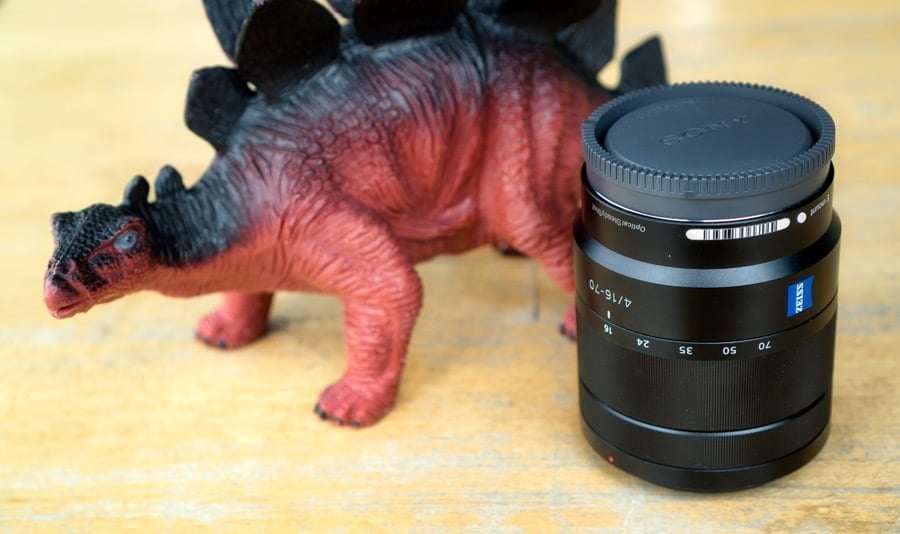
Some people are into primes, others like their zooms. If you’re a zoom lover, then the 16-70mm f/4 is the perfect mid-range zoom for everyday use. Equivalent to 24-105mm on a full-frame, it gives you the greatest versatility, covering a wide range of focal lengths while keeping a constant f/4 aperture.
Great for everything from landscapes (at the wide end) to portraits (at the telephoto end). Definitely the best all-around zoom.
Sony 20mm f/2.8
A super compact pancake lens, the 20mm f/2.8 will make your Sony a6500 feel almost like a point-and-shoot. Equivalent to a full-frame 30mm, the focal length is versatile enough to go anywhere and do almost everything.
Like the 24mm f/1.8, the 20mm f/2.8 is a great carry-around-town lens and works well on a variety of subjects.
Sony 10-18mm f/4
Every kit needs a wide angle lens, especially if you’re into landscapes or architecture. Compared to many other wide angle lenses, the Sony 10-18mm f/4 is small and compact, making it easy to zip up in a jacket pocket.
Equivalent to a full frame’s 15-27mm, the Sony 10-18mm f/4 is definitely one of my favorite lenses to take hiking around.
Sony 50mm f/1.8
The Sony 50mm f/1.8 is an usual focal length (equivalent to 75mm) and when used well will compress a scene and direct the viewer’s eye.
If you want to make it feel like a backdrop is closer than it really is, this is the lens for you. Combine that with the f/1.8’s fantastic bokeh that separates the subject form the background and you get some amazing effects.
Great for taking head-shots or photographing people in general. It’s definitely become our favorite portrait lens.
Sony 35mm f/1.8
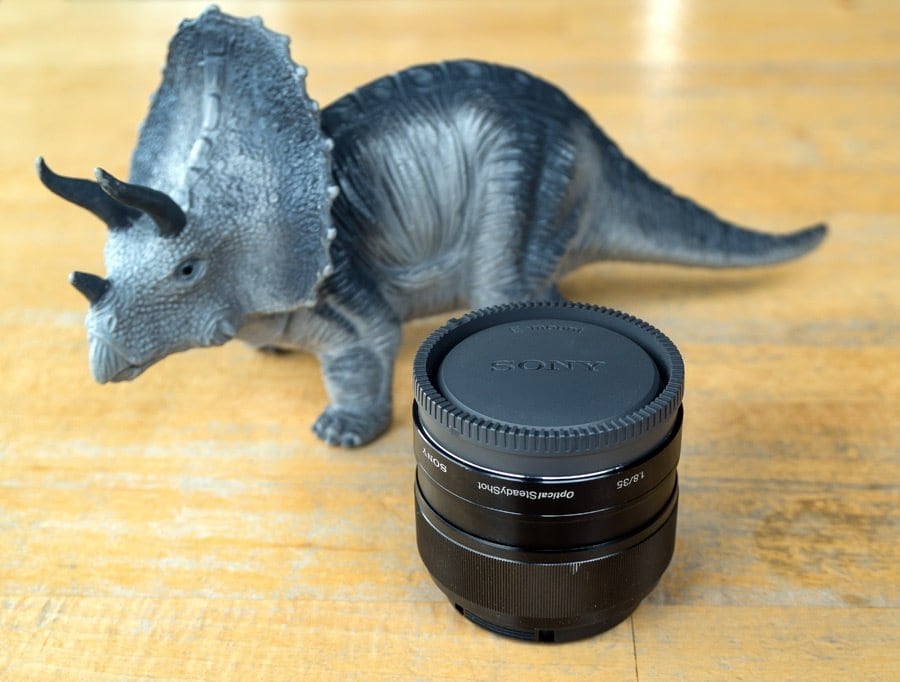
Believe it or not, I really love the “nifty fifty” and this 52.5mm-equivalent worked perfectly with the a6300. Super sharp and fast, the Sony 35mm f/1.8 is both inexpensive and light.

Sony a6300 + Sony 35mm f/1.8 |ISO 100 | f/2.2 | 1/6 sec
During the month I used the Sony a6500, the Sony 35mm f/1.8 was really my favorite lens to carry around. Everything from movie posters to slugs came out sharp and crisp. Definitely a must-have for every kit.
Final Words
The Sony a6300 is a surprisingly reasonable option for those looking for excellent performance in a small body.
Its image quality, dynamic range, amazing autofocus system, and excellent video capabilities make it a strong contender for an affordable secondary camera.
If you’re not needing the IS or touch screen, and you don’t need the improved low light capabilities of the a6500, this is definitely a camera worth considering.

Excellent autofocus performance, great image quality, and plenty of useful features, all wrapped up in a compact body.





